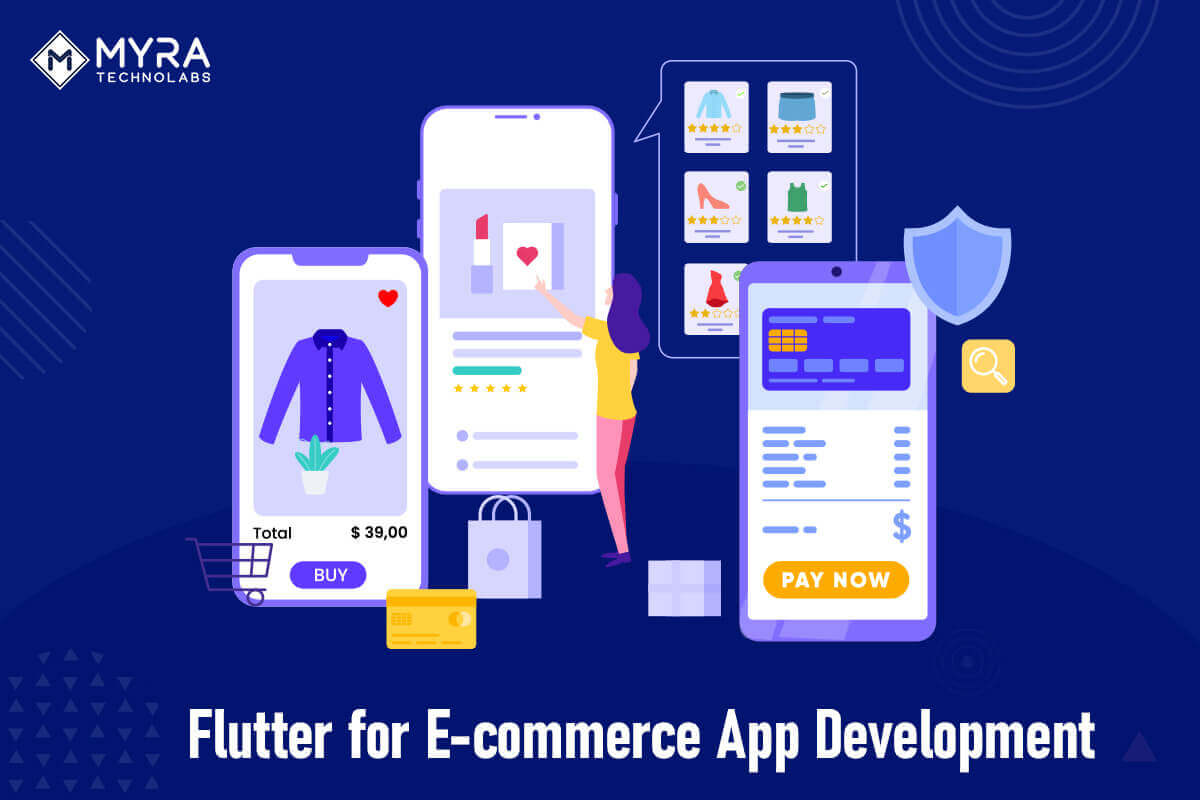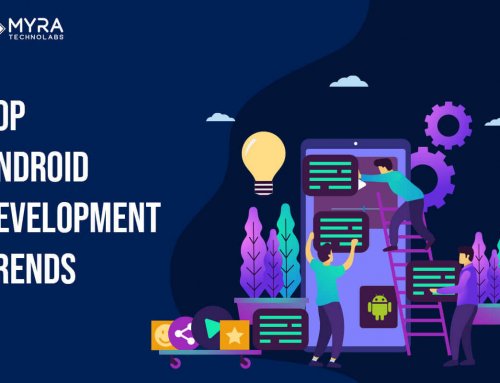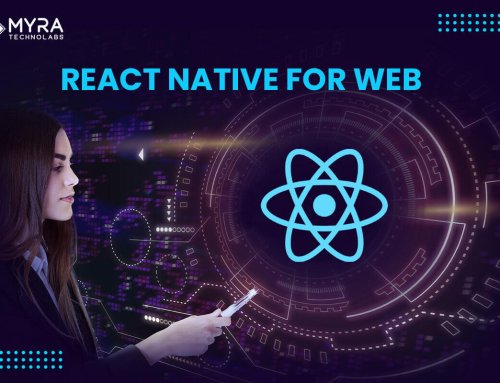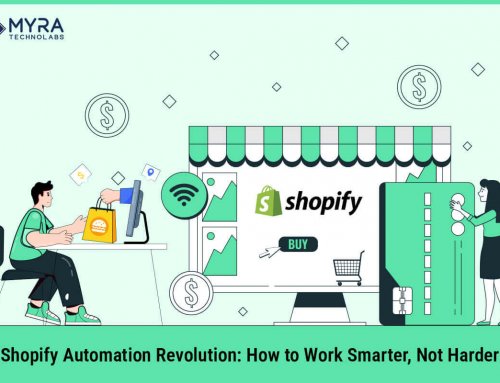There has been a surge in the demand for the eCommerce market globally. The increased use of mobile phones apart from the easy accessibility of the internet has driven things ahead. With more people looking forward to shopping online, there has been a tremendous rise in mobile shopping.
With Flutter, developing high-performing eCommerce applications in the shortest period is possible. As here a single codebase is used both for Android and iOS platforms, it also saves the development effort required by the developers. Again, you can launch your eCommerce app fast owing to the hot reload feature of Flutter.
Here in this post, we will see what is required for a successful eCommerce app development and the role of Flutter in helping us achieve the same goal.
Understanding E-commerce App Essentials
A successful eCommerce application possesses a few key features and they are:
- Implementing a powerful search bar, filters, and menus to let users easily find what they are looking for.
- Including informative product descriptions and compelling images to let users make the right choices.
- Ensuring personalized shopping experience by saving login information and buying preferences of shoppers.
- Letting shoppers manage their wishlist and checkout items through efficient shopping cart management.
- Offering different secure payment options as per customer convenience for a seamless shopping experience.
- Provide current status of orders to customers through real-time order tracking.
With Flutter, you can have intuitive search interfaces, seamless product listings, and smooth checkout through its prebuilt widgets. Widgets can be customized for building visually appealing user interfaces. eCommerce applications can display dynamic content by leveraging its state management solution. You can use the navigation of the platform to let users easily move from one part of the eCommerce app to another. You can go ahead with top-class Flutter app development services to achieve the same.
Planning Your E-commerce App with Flutter
If you are planning to build your ecommerce application with Flutter then you are required to take care of a few things.
- It would help if you defined your target audience and their preferences. Based on that you can set your product categories.
- Plan out different app screens and come up with a defined user journey.
- Select the backend technologies for the app like Firebase and custom API.
- Now based on the eCommerce app, select the right UI patterns.
Designing a User-Centric Experience with Flutter
For an eCommerce store, it is crucial to have an intuitive UI and smooth navigation. It will help the eCommerce store boost online sales while reducing the bounce rate. Apart from building happy customers, it will help you stand out in the market.
Flutter comes with a rich widget library that can help you meet different needs of eCommerce app development effectively.
- You can structure product listings using the widgets from Flutter. You can also add prices, ratings, and names of products with proper styling using its Text widgets.
- You can implement search and filter functionalities in your eCommerce store by using different widgets of Flutter like TextField, Checkbox, DropdownButton, etc.
- Display all the items on the shopping cart screen using the Flutter widget named ListView. You can also use other widgets like Stepper and Card to manage item quantities in the cart and to display its details, respectively.
- Use the TextField widget to secure registration and login forms. The platform also comes with in-build validators which can be used to ensure correct information is entered in the fields.
Also, read the blog on Flutter App Development For Businesses
Implementing Core E-commerce functionalities in Flutter
With Flutter, you get to implement the core essential features of an eCommerce store. They are:
-
Product Listing and Details
Flutter can help you display a product with all required information including name, description, images, and price using the right widget by fetching the data from the backend using API calls. It also helps you implement search and filter functionalities for finding products as needed.
-
Shopping Cart Management
With Flutter, you get to manage your shopping cart with ease. Right from letting users add or remove items from the cart, you can let them manage it. You can also include price calculations based on the quantity of items added.
-
Secure Checkout Process
With Flutter, you can create eCommerce stores that let shoppers conduct secure transactions by integrating payment gateways like PayPal or Stripe. It also lets the admin manage orders and shipping address details of customers.
Managing Backend and Data for E-commerce Apps
Firebase comes with a set of tools that helps in data storage, user authentication, and order management. Firebase Realtime Database is one such tool that helps you with data storage by letting you store and retrieve data in real time. You can store information on products with complex structures using Cloud Firestore. Cloud Storage is another tool that lets you store all kinds of information related to products on the Cloud.
When it comes to handling the complex features of Flutter, a mobile app development company will integrate custom backend APIs. It involves the following steps:
- Understanding the APIs
- Selecting networking package
- Model data
- Make API calls
- Handle JSON responses
- Update UI
Some of the ways to secure user data and payment information is by collecting minimum data and storing them securely. Validating data and enforcing HTTPS for all kinds of communication of the browsers with the eCommerce store protects it from malicious attacks.
For any eCommerce store, it is crucial to have effective inventory management and product data updates. It can be carried out effectively by having a centralized storage and implementing automated updates. Offering real-time inventory tracking automating the re-ordering process, and setting thresholds for stock level will help in managing inventory effectively.
Optimizing Performance for a Flawless User Experience
Through reliable Flutter app development services, you can ensure seamless performance of your eCommerce app by following a few steps. They are:
- Improve the initial load time by implementing lazy loading for images. Here all the images will load delayed till the time it is visible on the screen.
- Making use of caching mechanisms to locally store frequently accessed data on the device of the user. This will help in reducing data usage, boost performance, and reduce the number of repetitive network requests.
- Minimize network requests by combining data from different requests to a single API and manage network call activities by using a network activity indicator.
Testing and Quality Assurance
To ensure we have a successful and user-friendly eCommerce app, it is important to carry out thorough testing. A mobile app development company will carry out different kinds of testing like:
- Unit testing
- Integration testing
- User acceptance testing
Test the individual components of the app through unit testing. This will help in detecting the bugs in the early stage and enhance code maintainability.
Integration testing will help you know how different components in your app work together. It will help you understand the kind of communications, interactions, and data flow that takes place between different components and external services. Such testing will help ensure that the overall functionality of the app is achieved and any integration issues can be identified and resolved quickly.
User acceptance testing is carried out by involving real users. A simulated app environment is created to know how they interact with the app. This helps in identifying any user experience issues prevalent in the app and thereby works towards achieving user satisfaction.
Security and Payment Integration
For any eCommerce application, it is a priority to secure payment information and user data. This can be achieved by following a few best practices like:
- Only collect the required data
- Come up with robust storage mechanisms
- Ensure regular security updates
Opting for the right encryption methods and choosing secure payment gateways is important when you are dealing with sensitive information. You need to be compliant with PCI DSS and ensure communications only take place with HTTPS.
Integrating payment gateways with Flutter involves a few steps and they are:
- Choose a desired payment gateway
- Setup merchant account
- Get API credentials
- Install the Flutter payment gateway package
- Implement payment functionality
- Implement security measures
Read the blog on mobile app development for startups
Launching Your E-commerce App and Beyond
Once you have developed your eCommerce app using Flutter, it is time to launch it on the app stores for your potential users to access. Deploying the eCommerce app on app stores requires you to follow a few steps and they are:
- Finalize the app in terms of UI, features, and functionalities.
- Create developer accounts for Apple App Store and Google Play Store and get them verified
- Create app assets for each app store
- Create a privacy policy
For Google Play Store:
- Come with an app listing
- Enter app details
- Upload app assets
- Choose pricing and distribution
- Carry out internal testing
- Publish the app
For the Apple App Store:
- Ensure an active Apple developer account
- Connect with the Apple Store with the account
- Enter information for the New App
- Enter app details, version information, and screenshots
- Provide app review
- Mention pricing and availability
- Release the app
If launching the app is the first step, the next is promoting and marketing it. You have to take the necessary steps to ensure it reaches the target audience base and drives sales for the business. You can carry out social media marketing, ASO, and influencer marketing before launching the app. The post-launch strategies include paid advertising, app store reviews, content marketing, email marketing, and PR. Once the app is on the market, you can opt for referral programs, push notifications, loyalty programs, and other engagement measures.
Ideal Flutter app development services will include app maintenance and updates to ensure the optimal performance of the eCommerce app. This includes:
- Security updates
- Bug fixes
- Performance optimization
- Adding new features and functionalities
- Ensuring app store compliance
Future Trends
The eCommerce marketplace is going through continuous evolution as user expectations and technologies keep changing. Some of the trends that we can witness in the field of eCommerce are:
- AI-powered recommendations: Elevate user experience with personalized product suggestions, driven by cutting-edge AI algorithms.
- Dynamic offers: Engage customers with tailored promotions and discounts that adapt in real time to their preferences and behavior.
- Virtual try-outs: Enhance the shopping journey by enabling virtual fitting rooms or product trials, offering an immersive experience.
- Product virtualization: Enable customers to visualize products in their environment using augmented reality, fostering confident purchasing decisions.
- Voice search: Embrace the convenience of voice-activated shopping, allowing users to find products effortlessly through natural language commands.
- AI-powered chatbots: Provide instant assistance and support to shoppers 24/7, leveraging AI chatbots for personalized recommendations and quick problem resolution.
- Livestream shopping: Connect with customers in real-time through interactive live streams, showcasing products and enabling direct purchases.
- One-click ordering: Simplify the checkout process with one-click ordering functionality, reducing friction and encouraging impulse purchases.
- Robust security measures: Ensure the safety of sensitive data and transactions through advanced encryption and authentication protocols, building trust with customers.
For eCommerce development and beyond, Flutter is said to be a promising solution. Some of the anticipated advancements include:
- Hot reload available for larger codebase
- Support for more platforms
- Advanced animation tools and UI widgets
- Better development tools
- Support for advanced technologies like IoT, Blockchain, wearables, etc.
Conclusion
Before getting ahead with eCommerce app development with Flutter, you need to understand the essential things required for building an eCommerce app. You can then build the essential functionalities using Flutter. Here the aim should be to come up with a user-centric eCommerce application.
With Flutter, you will be able to build eCommerce applications quickly at lesser costs. It also helps you build a high-performing and scalable mobile application that offers a native experience to the users. You will be able to build successful eCommerce apps with Flutter owing to its increasing capabilities in terms of next-gen technologies and the continuous development taking place on the framework. By teaming up with a good mobile app development company, it will become possible for businesses to build excellent eCommerce apps.
To know more about Flutter and its role in mobile app development, it would be better to explore the mobile app platform. Right from going through the tutorials available out there to get in touch with the support community, you will be able to know more about its effective role in molding the future of the eCommerce landscape.




